Ethiopia currently has an army of trained guerrilla forces that successfully participated in the overthrow of the Islamic Courts in Somalia in 2006, in addition to counter-terrorism security forces and the Anti-Terrorism Declaration (ATP) which it issued in 2009 to sue crimes related to terrorist activities and to hunt down on all those involved in them.
Mohammed Al-Dabouli
Terrorism is a global phenomenon that threatens a large number of countries in the world. Based on this threat, most countries have adopted precautionary measures to prevent terrorist attacks. Despite the prevalence and spread of this phenomenon, many countries have developed special immunity against terrorist groups.
If we looked at the number of countries targeted by the terrorist attacks over the past years, it is noted that the number did not exceed dozens of countries based in the Middle East, Europe and North America, while no terrorist operations occurred in the Latin American continent. Moreover, most of the sub-Saharan African countries are almost free of terrorism. Terrorism is endemic in certain areas and regions in the north and east of the continent, while the southern Africa region is almost free of terrorist attacks launched by extremist organizations.
Therefore, we find ourselves faced with a new concept: the realization by some countries of the so-called immunity from terrorist operations as they have never been subjected to bloody terrorist attacks, such as those occurring in the countries of the Middle East and some European countries such as France and Belgium.
Ethiopia is one of the countries that have achieved immunity from terrorist operations. Over the past years, there has been no terrorist activity in Ethiopia, despite the fact that Ethiopia has been in a turbulent region full of terrorist groups and organizations such as the Al-Shabaab terrorist group and the Ugandan Lord’s Resistance Army.
Ethiopia is intertwined in many files related to terrorist organizations. On the one hand, it is a strong regional player in the war on terror. It intervened in Somalia in 2006 to prevent the Union of Islamic Courts from dominating Somalia. Al-Shabaab movement in Somalia was established on the backdrop of Ethiopia interventions in the Somali affairs and the overthrow of the rule of the Islamic courts. In terms of the internal religious and political situation in Ethiopia, it is very complicated. For decades, Muslims have suffered from political and economic marginalization.
Therefore, the study revolves around a major question: how has Ethiopia, despite its presence in a turbulent regional environment due to the proliferation of terrorist groups and a complex internal religious situation, developed special immunity against terrorist groups? During the past two decades, Ethiopia has not experienced any terrorist attacks. Moreover, Al-Shabaab group in Somalia did not have any targets inside Ethiopia.
It cannot be overlooked that, as a result of the complex ethnic situation, Ethiopia has witnessed many killings of ethnic identity or what may be called political violence rather than terrorist acts. It is therefore necessary to distinguish between the terrorist operations by terrorist groups and the operations of ethnic insurgent groups (political violence).
Based on the previous questions, the study will be addressed according to the following axes:
- The concept of terrorist immunity and its indicators of measurement
- Incentive environment for internal and external terrorism
- The reasons for Ethiopia’s immunity from terrorist operations
- Future paths
Axis I: The concept of terrorist immunity and its indicators of measurement
There are no previous attempts to define immunity from terrorist operations. Most research efforts are primarily focused on the definition of terrorism and ways of preventing it. A concept of immunity from terrorism has never been addressed in many political studies and research papers.
However, this does not prevent the existence of many indicators that try to approach the concept of immunity from terrorism. For example, the “Global Index of Terrorism” issued by the Institute of Economics and Peace (IEP) annually publishes indicators to measure terrorism and peace in the world. The Global Terrorism Index measures many variables through which the terrorist threats that surround the state, such as the number of terrorist acts committed, the number of victims and deaths, the level of conflict and the number of groups, most importantly al-Qaeda and Islamic State (Daesh) in addition to the economic effects on the terrorist operations.
Countries are classified according to the previous variables to about 7 categories, which started from countries that are very vulnerable to terrorist operations and ending up in countries not covered by terrorist operations. In the middle, there are countries that are moderately vulnerable to terrorist operations.
There is another indicator from which the concept of immunity from terrorist operations can be derived which is the International Peace Index. The Index was issued by the Institute for Economics and Peace. The index measures three main variables:
– The level of social safety and security in the internal society.
– State and internal conflicts at the internal or external levels.
– The degree of militarization in the state, ie, whether the state is mobilizing more of its economic, social and media capabilities in the direction of militarization or otherwise.
From the previous simplified analysis of the importance of the previous two indicators, one can deduce a concept of the terrorist immunity of a state that succeeds in promoting peace-building opportunities, whether in its internal components or in its external relations, reduces the possibility of terrorist operations, and is completely free from terrorist groups.
From this point of view, immunity from terrorist operations can be achieved through the following elements:
Social peace: To immunize any state of terrorist operations, it should first resist the social injustice suffered by some disadvantaged and marginalized groups. Violence and terrorism are often born out of marginalization and injustice. Terrorist groups always resort to finding popular incubators that are marginalized and socially disadvantaged. For example, Daesh organization and Al Qaeda found some of its public incubators in the Sunni provinces of Iraq, which was subjected to further marginalization and political exclusion after the fall of the regime of Saddam Hussein in 2003.
Adopting a community discourse based on tolerance: Inciting discourse, whether religious, political or community, always encourages the increase in opportunities for terrorism. Therefore, ideas and principles should be adopted to promote tolerance and avoid sectarianism and discrimination.
Contributing to the achievement of world peace: This element helps states a lot in overcoming terrorist threats. It is noted globally that countries that refrain from involvement in international conflicts or supporting terrorist groups are less vulnerable to terrorist operations and groups. For example, Oman pursues a foreign policy based on not getting involved in any dispute or armed conflict in the region and adopting a policy of total neutrality which made it far from terrorist attacks. The same applies to China which adopts policies that keep it away from involvement in armed disputes and conflicts and thereby have succeeded in making its territories and citizens avoid terrorist attacks.
Strengthening security expertise: The accumulated security expertise of the security agencies clearly contributes to strengthening the capabilities of the security agencies in the face of extremist and terrorist groups and organizations. For example, the experiences gained from the black decade events in Algeria have greatly contributed to reducing the risk of the spread of Daesh in Algeria’s neighbouring countries whether Libya or Mali.
Many countries that have faced rebel organizations in the past decades have had the ability to confront extremist terrorist groups such as Ethiopia, which has suffered from many separatist movements such as the Eritrean Liberation Movement. Ethiopia’s long experience in confronting rebel and separatist groups has significantly contributed to providing its security services with strong expertise in the face of any extremist organizations such as al-Shabaab movement in Somalia.
Early Prediction of Terrorist Threats: Each country should possess its own index to measure the degree of terrorist threats and attempt to predict through its own variants the possibility of terrorist attacks.
Promoting development at the expense of militarization: Sustainable development promotes the elimination of social injustice and thus reduces the risks of terrorist groups, where there will be no public incubators. It is known that popular incubators of extremist groups are often marginalized and politically and culturally disadvantaged groups.
Axis II: Incentive environment of terrorism internally and externally:
The political environment in which Ethiopia is moving is a boosting environment for terrorism and the proliferation of multiple terrorist groups in the Horn of Africa, which is considered one of the world’s areas where terrorist groups are active such as Al-Qaeda’s al-Shabaab movement, as well as radical Christian groups like the Ugandan Lord’s Resistance Army.
The internal and external political dynamics in Ethiopia encourage terrorism and the presence of terrorist groups, where ethnic division in addition to the economic and social marginalization suffered by many ethnic groups in Ethiopia are among the most prominent of these dynamics:
Ethnic separation: Since the overthrow of the Derg regime in Ethiopia under the leadership of the Democratic Revolutionary Front of the Peoples of Ethiopia led by Mehlis Zenawi in Addis Ababa, the Front has followed the style of “ethnic federalism” to resolve the demands for separation and balance between different ethnic groups. However, the ruling party, the Revolutionary Front, succeeded in emptying the powers of ethnic federalism from its content by controlling regional governments.
The Tigray monopoly and the consolidation of social injustice: The Tigray group is one of the ethnic groups spread throughout Ethiopia, but it is distinguished by its success in controlling the reins of power and governance in the country through the monopoly of political positions. For example, the late Prime Minister Meles Zenawi belonged to the Tigray tribe and empowered the Tigray group to take over the Ethiopian economy by establishing a complex network of investment companies working in the construction, communications, electricity and metal industries. The Endowment Fund for Rehabilitation of Tigray (EFFORT) was established. The fund, which consists of 12 companies, is almost entirely controlling the Ethiopian economy.
The political and economic empowerment of the Tigray community has greatly contributed to the increasing social injustice of many other groups that have suffered marginalization and social and political exclusion, such as the Oromo group.
The proliferation of armed ethnic groups: The monopoly of positions and resources controlled by the Tigray group (Christian) and the denial of economic resources and benefits to the largest Oromo groups (with a Muslim majority) led to the proliferation of more ethnic groups and movements that use violence as a means of achieving their objectives, including in the foremost the Oromo Liberation Movement classified as terrorist by the Ethiopian government.
Here, rebel groups that claim some ethnic rights should not be confused with extremist groups that have emerged under religious guise and seek to achieve goals that claim to serve religion, such as al-Qaeda and Daesh.
Religious-religious conflict: For decades, Muslims in Ethiopia suffered from religious persecution as a result of Christian domination of power and authority in Addis Ababa, and increased persecution once again under the communist Derg regime. With the arrival of the current regime at the beginning of the nineties, a secular approach to the state was adopted as a basis regulating interfaith relations in the country, which gave Muslims more religious freedoms and greatly contributed to the empowerment of Muslims in the country.
However, the government’s fear of the spread of radical Islamist groups has made the Ethiopian government work to empower the Ahbash clan of religious affairs in the country, creating a conflict within Muslims between the Salafist and the Ahbash communities.
This led to the control of the Ahbash on the Supreme Council for Islamic Affairs and mosques in Ethiopia to the rise of intermittent Salafist protests on these decisions in 2012, causing the arrest of more supporters of the Salafist trend in Addis Ababa.
Reading the Ethiopian religious scene, it is clear that for the last three decades the government has managed to spare the country a sectarian war between Muslims and Christians, but at the same time created a climate of sectarian conflict between the Salafists and the Habashis.
The existence of a Muslim Brotherhood trend in Ethiopia: The Brotherhood’s presence in Ethiopia was not the result of past years, but its roots extend to past decades. Initially, the Islamic Reform Movement in Eritrea and its ensuing party, the Islamic Party (1988), represented the first Ethiopian presence in Ethiopia.
However, in 1993, after the independence of Eritrea, the Brotherhood’s presence in the country was rearranged. It was first spread in universities, among the Muslim intelligentsia, students in universities and schools, and the Brotherhood movement was very active in the Ethiopian arena.
Despite the fact that the trend has achieved widespread proliferation among students and intellectuals, its supporters refuse to frame it in an organizational framework for fear of pursuing the state’s security apparatuses. The current trend, though not organized, indicates the possibility of religious violence in the future.
Intervention in Somalia: Ethiopia militarily intervened in Somalia in 2006 to topple the rule of the Islamic Courts, which led to the emergence of al-Shabaab movement loyal to al-Qaeda. Al-Shabaab takes the Ethiopian presence in Somalia as a pretext to launch terrorist operations, and its terrorist attacks hit many Ethiopian targets outside Ethiopia. For example in June 2016, About 30 Ethiopian soldiers were killed in attack against the base of the peacekeeping forces of the African Union (AMISOM) in central Somalia by a car bomb.
It is noted that the terrorist operations affect the Ethiopian forces which are operating outside Ethiopia and are present in Somalia, but the Ethiopian internal affairs are still immune to the launching of various attacks of al-Shabaab movement, unlike other neighboring countries such as Kenya and Uganda.
Axis III: Ethiopia’s immune factors from terrorist operations
Ethiopia does not suffer from terrorist attacks such as those in Egypt, but it suffers from attacks of another kind classified as domestic terrorism supported by external forces, especially Eritrea, which is always accused by the Ethiopian side of supporting terrorism and rebel groups in Ethiopia. For example, Addis Ababa accuses its neighbor Asmara of supporting the Ginbot 7 movement, which is an internal opposition movement classified by Ethiopia as a terrorist movement.
After a review of the previous elements calling for the spread of terrorism in Ethiopia, but we find a scarcity of operations. We are hardly aware of the news from Ethiopia about the perpetration of terrorist operations and few of them may not be linked to international terrorist movements such as Al Qaeda and its branch in the Horn of Africa (Al-Shabaab movement) or even Daesh (the Islamic State). This opens the door to many questions about the reasons for Ethiopia’s immunity from terrorist attacks, which can be clarified in the following points:
The reluctance of Ethiopians from participating in transnational terrorist organizations: We cannot be sure that no Ethiopians belong to major terrorist groups such as Al-Qaeda and Daesh. However, it is clear that the Ethiopians are more reluctant to participate in such terrorist organizations. They are more involved in local militias. That means that the national dimension is still the engine and the main motive of the Ethiopians in confronting the government and perpetrating armed violence operations, which we find in the movements of the Oromo Liberation Movement and the Ogaden Liberation Front.
Popular Participation in the War on Terror: Many Ethiopian analyzes suggest that the secret of not perpetrating terrorist crimes in Ethiopia is due to popular participation in the war on terror. For example, the spokesman for the Ethiopian Ministry of Foreign Affairs, Tewolde Mulugeta, asserted that the reason in the non-occurrence of major terrorist attacks in Ethiopia is the popular participation in the war on terror.
Strong security nets: Ethiopia, which currently has an army of forces trained on guerrilla warfare, successfully participated in the overthrow of the Islamic Courts in Somalia in 2006. It also has security forces trained on the fight against terrorism, as confirmed by the Ethiopian security expert Okilo. Ethiopia issued in 2009 the Anti-Terrorism Protocol (ATP) to sue crimes related to terrorist activities and to hunt down on all those involved in terrorist operations.
In addition to the accumulated security experience, the Ethiopian government has worked to achieve great consensus among all its security apparatuses. There is no contradiction in authority. The Ethiopian National Security and Intelligence Service has undertaken the task of combating terrorism in the country and forming a committee to coordinate tasks between the intelligence services, the federal police and the local police in different states.
For more security precautions, Ethiopia has taken stricter measures in dealing with political borders. Its borders are almost closed. Moreover, precise procedures are being followed to inspect and track travelers during their stay in the country. It is not easy to travel to Ethiopia without close security control.
Strengthening regional cooperation in the fight against terrorism: Ethiopia is active in the area of regional cooperation in the fight against terrorism, where the Ethiopian Federal Police and Intelligence has formed a high-level coordination with the security services in Uganda to prevent attacks by al-Shabaab in Ethiopia.
In order to strengthen regional cooperation in the fight against terrorism, Ethiopia joined the Regional Anti-Money Laundering Group (ESAAMLG) to strengthen its actions in combating the financing of terrorist organizations.
Ethiopia is also participating in the African Union’s efforts to combat terrorist organizations in Somalia through the AMISOM forces concerned with combating the threat of al-Shabaab group in the Horn of Africa. Addis Ababa is also seeking to exploit its prominent role in the Intergovernmental Authority on Development (IGAD) in developing anti-terrorism programs as well as security services in the organization’s countries.
Partnership with the United States: This has provided significant opportunities for training the Ethiopian security and military forces in the fight against terrorism. It is well known that Ethiopian interventions in Somalia have been proxy for Washington and thus Ethiopia is a strong ally of America in the war on terror.
Various threats in a turbulent environment: Ethiopia lives in a turbulent regional political and security environment. On its eastern border, the al-Shabaab movement is active. On its borders with Uganda, the radical Lord’s Resistance Army is active and influential in the Sudanese file before realizing the independence of southern Sudan in July 2011. The network of previous threats has made the security forces have more experience in dealing with such crises.
Ethiopia has suffered throughout its history from the spread of many rebel and separatist movements such as the Liberation Movement of Oromo and the Eritrean Liberation Movement, which also gained the security forces high experience in dealing with armed militias and the ways of dismantling them.
Absence of the religious dimension from secessionist movements: Ethiopia is composed of many ethnic groups such as Tigray, Amhara, Oromo and Somalis. Almost every group has a liberation movement that wants to break away from the body of the Ethiopian state and form an independent state.
The most prominent of these movements is the Ogaden National Liberation Front (ONLF) since the inception of the Front in 1981. It raises the banner of liberation from the Ethiopian hegemony over the Somali Ogaden region. Ninety-eight percent of the population of the Ogaden region is Muslim, but the Ogaden Liberation Front refuses to turn the war with Addis Ababa from a national separatist war into a religious war. That means that it rejects turning religious the issue of the independence of the Ogaden. However, its rejection of turning the issue religious did not prevent it from targeting Ethiopian mobile forces to overthrow the rule of the Islamic Courts in Mogadishu in 2006.
Axis IV: Future paths
There are currently questions about how Ethiopia can fortify its immunity from terrorist attacks, although most international reports clearly indicate that it may be exposed to terrorist acts from radical Islamist organizations such as Daesh and al-Qaeda. For example, Ethiopia ranks high on the list of terrorism (24) and ranks low in the international peace index (139). The world’s standard indicators highlight the increasing prospects and assumptions of terrorism and the reduction of opportunities for peace, as well as the risk of Ethiopia being subjected to terrorist operations dependent on the following three factors.
A reversal of the underway political reform: The Ethiopian political process is currently undergoing a major political transformation since the current Prime Minister Abe Ahmed took power in April 2018. This is a high priority for the aspirations of the marginalized groups, especially the Oromo and Somali communities with the Muslim majority. A rebound on the ongoing political reforms would increase the levels of frustration in Muslim groups, which could gradually push them to adopt a more radical and closer view of al-Qaeda’s rhetoric.
Mutation of the ideologies of the separatist groups: As previously reviewed, the separatist groups, especially in the Somali region of eastern Ethiopia, refuse to use religion as an ideological lever in the face of the Ethiopian government. However, if there is a mutation in its ideology towards adopting Islamic views, that will be the major gateway not only for the spread of terrorist operations in Ethiopia, but also for the consolidation of Daesh and al-Qaeda. Although it is a rebel movement calling for separation from Ethiopia, the Ogden Liberation Front was an impenetrable barrier against the spread of Al-Qaeda and Daesh in the country.
The complexity of the Islamic crisis: The complexity of the Islamic crisis between the Salafists and the Ethiopians in Ethiopia may lead to further extremism and infiltrate the ideas of the jihadist Salafism into Ethiopia. Therefore, the Ethiopian government should correct the crisis and reduce the Ahbash’s influence on religious affairs in Ethiopia and achieve the acquiescence of the Salafist trend alongside the government rather than being hostile against it.
Finally, many countries have succeeded in achieving special immunity from terrorist operations, but it is noted that there are no specific steps taken by any country to achieve this safety and immunity from terrorist operations. Each country has its own experience of achieving safety and immunity.
It can be said that Ethiopia is an uneasy and unstable experience. The surrounding regional environment continues to suffer from the spread and increasing influence of terrorist groups, and the domestic situation in the country is strongly predicted to be an incubator for terrorist groups in the future.
We must not lose sight of the international dimension in protecting Ethiopia from terrorist operations. After the fall of the regime of Mengistu Haile Mariam, Ethiopia was born in the American recovery room. The United States intervened and succeeded through the support of the Democratic Revolutionary Front of the Peoples of Ethiopia in maintaining the cohesion of Ethiopian territory and preventing its disintegration into nine states at least. US support for Addis Ababa continued following the rise of the Union of Islamic Courts to power in Somalia, prompting unrivaled US support for Addis Ababa to counter the radical rise in Somalia.
The situation in Ethiopia can therefore be expected to remain pending until a new vision emerges in Washington in dealing with Ethiopia. As long as Addis Ababa is an active element in the war on terror and under the leadership of the United States, terrorist threats remain far from it.



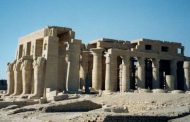



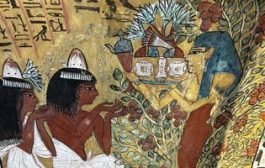


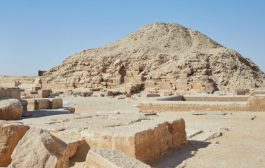













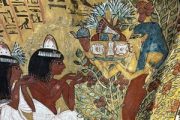


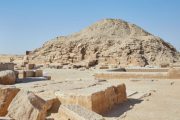
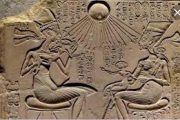



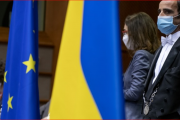

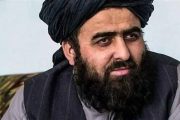




admin in: How the Muslim Brotherhood betrayed Saudi Arabia?
Great article with insight ...
https://www.viagrapascherfr.com/achat-sildenafil-pfizer-tarif/ in: Cross-region cooperation between anti-terrorism agencies needed
Hello there, just became aware of your blog through Google, and found ...